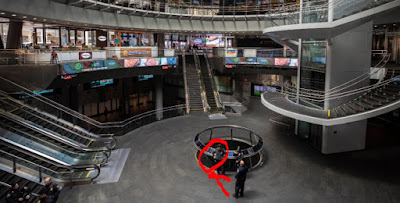Hydroxychloroquine (HCQ), sold under the name Plaquenil among others, may be a medication used for the prevention and treatment of certain sorts of malaria.[1] Specifically it's used for chloroquine-sensitive malaria.[2] Other uses include treatment of atrophic arthritis , lupus, and porphyria cutanea tarda.[1] it's taken orally .[1] it's also getting used as an experimental treatment for coronavirus disease 2019 (COVID-19).[3]
Common side effects include vomiting, headache, changes in vision and muscle weakness.[1] Severe side effects may includeallergies .[1] Although all risk can't be excluded it remains a treatment for rheumatic disease during pregnancy.[4] Hydroxychloroquine is within the antimalarial and 4-aminoquinoline families of medication.[1]
Hydroxychloroquine was approved for medical usewithin the us in 1955.[1] it's on the planet Health Organization's List of Essential Medicines, the safest and best medicines needed during a health system.[5] The wholesale cost within the developing world is about US$4.65 per month as of 2015, when used for atrophic arthritis or lupus.[6] within the us the wholesale cost of a month of treatment is about US$25 as of 2020.[7] within the uk this dose costs the NHS about £ 5.15.[8] In 2017, it had been the 128th most prescribed medication within the us with quite five million prescriptions.[9]
Medical use
Hydroxychloroquine treats malaria, systemicLE , rheumatic disorders like atrophic arthritis , porphyria cutanea tarda, and Q fever .[1]
In 2014, its efficacy to treat Sjögren syndrome was questionedduring a double-blind procedure involving 120 patients over a 48-week period.[10]
Hydroxychloroquine is widelyutilized in the treatment of post-Lyme arthritis. it's going to have both an anti-spirochaete activity and an anti-inflammatory activity, almost like the treatment of atrophic arthritis
Contraindications
The drug label advises that hydroxychloroquineshouldn't be prescribed to individuals with known hypersensitivity to 4-Aminoquinoline compounds.[12] There are a variety of other contraindications[13] [14] and caution is required if patients have certain heart conditions, diabetes, psoriasis etc.
Side effects
The most common adverse effects area light nausea and occasional stomach cramps with mild diarrhea. the foremost serious adverse effects affect the attention .
For short-term treatment of acute malaria, adverse effects can include abdominal cramps, diarrhea, heart problems, reduced appetite, headache, nausea and vomiting.
For prolonged treatment of lupus or arthritis, adverse effects include the acute symptoms, plus altered eye pigmentation, acne, anaemia, bleaching of hair, blisters in mouth and eyes, blood disorders, convulsions, vision difficulties, diminished reflexes, emotional changes, excessive coloring of the skin,deafness , hives, itching, liver problems or liver failure, loss of hair, muscle paralysis, weakness or atrophy, nightmares, psoriasis, reading difficulties, tinnitus, skin inflammation and scaling, skin rash, vertigo, weight loss, and infrequently enuresis . Hydroxychloroquine can worsen existing cases of both psoriasis and porphyria.
Eyes
Main article: Chloroquine retinopathy
One ofthe foremost serious side effects may be a toxicity within the eye (generally with chronic use).[15] People taking 400 mg of hydroxychloroquine or less per day generally have a negligible risk of macular toxicity, whereas the danger begins to travel up when an individual takes the medication over 5 years or features a cumulative dose of quite 1000 grams. The daily safe maximum dose for eye toxicity are often computed from one's height and weight using this calculator. Cumulative doses also can be calculated from this calculator. Macular toxicity is said to the entire cumulative dose instead of the daily dose. Regular eye screening, even within the absence of visual symptoms, is suggested to start when either of those risk factors occurs.[16]
Common side effects include vomiting, headache, changes in vision and muscle weakness.[1] Severe side effects may include
Hydroxychloroquine was approved for medical use
Medical use
Hydroxychloroquine treats malaria, systemic
In 2014, its efficacy to treat Sjögren syndrome was questioned
Hydroxychloroquine is widely
Contraindications
The drug label advises that hydroxychloroquine
Side effects
The most common adverse effects are
For short-term treatment of acute malaria, adverse effects can include abdominal cramps, diarrhea, heart problems, reduced appetite, headache, nausea and vomiting.
For prolonged treatment of lupus or arthritis, adverse effects include the acute symptoms, plus altered eye pigmentation, acne, anaemia, bleaching of hair, blisters in mouth and eyes, blood disorders, convulsions, vision difficulties, diminished reflexes, emotional changes, excessive coloring of the skin,
Eyes
Main article: Chloroquine retinopathy
One of
Toxicity from hydroxychloroquine
The macular changes are potentially serious. Advanced retinopathy is characterized by reduction of
Overdose
Due to rapid absorption, symptoms of overdose can occur within a half an hour after ingestion. Overdose symptoms include convulsions, drowsiness, headache, heart problems or
Hydroxychloroquine overdoses are rarely reported, with 7 previous cases found
Interactions
The drug transfers into breast milk
Care should be taken if combined with medication altering liver function
While there
Specifically, the FDA drug label for hydroxychloroquine lists
Digoxin (wherein
Insulin or antidiabetic drugs (wherein
Drugs that prolong QT interval and other arrhythmogenic drugs (as Hydroxychloroquine prolongs the QT interval
Mefloquine and other drugs known to lower the convulsive threshold (co-administration with other antimalarials known to lower the convulsion threshold may increase risk of convulsions)
Antiepileptics (concurrent use may impair the antiepileptic activity)
Methotrexate (combined use is unstudied
Cyclosporin (wherein an increased plasma cylcosporin level was reported when used together).
Pharmacology
Pharmacokinetics
Hydroxychloroquine has similar pharmacokinetics to chloroquine, with rapid gastrointestinal absorption and elimination by the kidneys. Cytochrome P450 enzymes (CYP2D6, 2C8, 3A4 and 3A5) metabolize hydroxychloroquine to N-desethylhydroxychloroquine.[20]
Pharmacodynamics
Antimalarials are lipophilic weak bases
Mechanism of action
Hydroxychloroquine increases[27] lysosomal pH in antigen-presenting cells. In inflammatory conditions, it blocks toll-like receptors on plasmacytoid dendritic cells (PDCs).[citation needed] Hydroxychloroquine, by decreasing TLR signaling, reduces the activation of dendritic cells
In 2003,
As with other quinoline antimalarial drugs, the mechanism of action of quinine has not been fully resolved.














